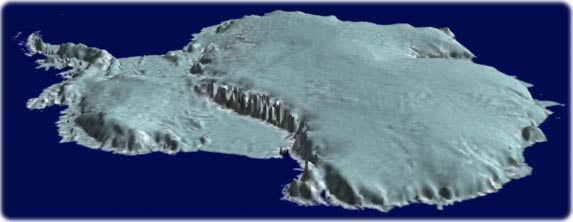 Samples of ancient protein dating back 80 million years preserved in bone fragments and soft tissues of a hadrosaur. (Credit: Courtesy of NCSU)
Samples of ancient protein dating back 80 million years preserved in bone fragments and soft tissues of a hadrosaur. (Credit: Courtesy of NCSU)Science News
Dinosaur-Bird Link: Ancient Proteins Preserved In Soft Tissue From 80 Million-Year-Old Hadrosaur
ScienceDaily (May 1, 2009) — Ancient protein dating back 80 million years to the Cretaceous geologic period has been preserved in bone fragments and soft tissues of a hadrosaur, or duck-billed dinosaur, according to a study in the May 1 issue of Science.
Led by scientists at Beth Israel Deaconess Medical Center (BIDMC) and North Carolina State University (NCSU), the research support earlier results from analyses suggesting that collagen protein survived in the bones of a well preserved Tyrannosaurus rex, and offer robust new evidence supporting previous conclusions that birds and dinosaurs are evolutionarily related.
In April 2007 John Asara, PhD, Director of the Mass Spectrometry Core at BIDMC, together with NCSU paleontologist Mary Schweitzer, PhD, published two papers in Science describing their discovery that collagen extracted from bone fragments of a 68-million-year-old T. rex closely matched the amino acid sequences of modern day chickens. Not surprisingly, the widely publicized findings created a great deal of controversy.
"With this new paper, we hoped to show that our T. rex discovery was not a unique occurrence," notes Asara, who is also an Instructor in Pathology at Harvard Medical School. "This is the second dinosaur species we've examined and helps verify that our first discovery was not just a one-hit wonder. Our current study was the collaborative effort of a number of independent laboratories, whose findings collectively add up to a robust conclusion."
At the heart of the controversy is the idea that ancient protein can exist at all. When an animal dies, protein immediately begins to degrade and, in the case of fossils, is slowly replaced by mineral, a substitution process assumed to be complete by 1 million years. But with this latest evidence, it appears that some proteins do indeed have real staying power.
"We wound up identifying nearly double the number of amino acids we recovered in the T. rex study," says Asara. "The sequences displayed high spectral quality and the interpretations were of high confidence."
The two scientists had decided to collaborate again after Schweitzer and paleontologist Jack Horner of Montana State University's Museum of the Rockies recovered the 80-million-year-old Brachylophosaurus canadensis femur bone in the summer of 2007 and observed that it appeared to be even better preserved than the original T. rex fossil.
Schweitzer's initial laboratory analyses confirmed this observation: After being subjected to demineralization, the B. canadensis bone fragments showed marked preservation of original tissues and molecules, with microstructures resembling soft, transparent vessels, cells and fibrous matrix – even though the fossil was much older than the T. rex sample.
"Deep burial in sandstone seems to favor exceptional preservation," notes Schweitzer, explaining that this fossil was found under approximately seven meters of sandstone in the Judith River Formation, in parts of what is now Eastern Montana.
Chemical extractions of bone and vessel were subsequently sent to the laboratories of BIDMC scientists Lewis Cantley, PhD, and Raghu Kalluri, PhD, where immunoblots and immunochemistry analyses were conducted to determine the presence of collagen protein in the samples.
"Having been a part of the T. rex study, I was curious to be part of this investigation as well," explains Cantley, Chief of the Division of Signal Transduction at BIDMC. "In view of the skepticism about the original findings, it was important to demonstrate that our findings in T. rex could be verified in another dinosaur and in other laboratories."
The results confirmed the existence of protein. "Because I am a collagen biochemist, our lab was contacted to perform an independent analysis of this new bone find," explains Kalluri, who is Chief of the Division of Matrix Biology at BIDMC. "We isolated the proteins – collagen, laminin and elastin – from the bone, and also extracted bone cells and blood vessels from this sample. Our findings demonstrated that it did contain basement membrane matrix."
In addition, In situ mass spectrometry studies conducted at Montana State University by Recep Avci and Zhiyong Suo independently verified amino acids in dinosaur tissues, including the collagen signature amino acid, hydroxylated proline.
From there, using a combination of two mass spectrometry technologies – linear ion trap and hybrid linear ion trap/orbitrap – Asara was able to improve upon the techniques he had used in analyzing both the T. rex specimen and specimens from bones of other prehistoric animals including a 300,000-year-old mammoth and mastodon.
At the beginning of the study, Asara explains, his lab used an ion trap mass spectrometer, which captures and holds peptides through time so that after the collected peptides are measured for mass they are isolated and fragmented to reveal their amino acid sequence. Then, while the study was in progress, his lab acquired a high-resolution and highly mass-accurate Orbitrap XL mass spectrometer, which was used during the second half of the analysis.
"Because it is capable of sub 2 ppm mass accuracy, the Orbitrap allowed us to make more confident sequence calls than we did in the T. rex study," Asara explains. "For example, the mass difference between a hydroxyproline amino acid residue [which is plentiful in collagen] and a leucine or isoleucine residue is only 0.0364 Da. Although this very small measurement proved to be an obstacle for the ion trap, it was not a problem for the Orbitrap." Material for mass spectrometry sequence analysis was also sent to the lab of William Lane at Harvard University and mass spectrometry sequence data were independently verified by John Cottrell, PhD, at Matrix Science in London, UK.
The end result was a total of eight collagen peptides and 149 amino acids from four different samples, sequences that held up when multiple validation steps were performed, including comparisons with synthetic peptides using a spectral comparison algorithm and statistical evaluation.
In the final portion of the study, coauthor Chris Organ, PhD, a Postdoctoral Fellow in the Department of Organismic and Evolutionary Biology at Harvard University, conducted a rigorous phylogenetic analysis of the identified sequences to determine B. canadensis' place within the evolutionary tree of animals. The B. canadensis collagen sequence data were compared to a database of collagen sequence data from 21 species of living animals and sequences from two other fossils, mastodon and T. rex. The results placed B. canadensis on the same family-tree branch with T. rex, in the same group as chicken and ostrich, and more distantly, to alligator and lizard.
"The phylogenetic analysis yielded clear results, but the placement of the extinct dinosaurs still rests on a limited amount of sequence data," notes Organ. "There is not enough sequence data to correctly parse out the relationships within Dinosauria [the group containing B. canadensis, T. rex and the two birds] but the group as a whole is well supported by the analysis, which is consistent with studies based on morphology."
Ultimately, notes Asara, "We were able to achieve these results, in part, because the mass spectrometry systems that our lab has set up for cancer research are capable of a similar concentration range – low to sub femtomole -- needed for ancient fossil protein sequencing. We hope to meet with similar success when it comes to identifying novel signaling proteins from cancerous tissues."
This study was funded, in part, through grants from the National Science Foundation, the David and Lucile Packard Foundation, the Merck Postdoctoral Science Research Fellowship, the National Institutes of Health and the Taplin Funds for Discovery, Harvard Medical School.
In addition to Asara and Schweitzer, coauthors include BIDMC investigators Lewis Cantley, Raghu Kalluri, Lisa Freimark, Valerie Lebleu, and Michael Duncan II; Wenxia Zheng of North Carolina State University; Chris Organ, John Neveu and William Lane of Harvard University; Recep Avci, and Zhiyong Suo of Montana State University; John Horner of the Museum of the Rockies (MT); Matthew Vander Heiden of the Dana-Farber Cancer Institute; and John Cottrell of Matrix Science, London, UK.
Journal reference:
1. Mary H. Schweitzer, Wenxia Zheng, Chris L. Organ, Recep Avci, Zhiyong Suo, Lisa M. Freimark, Valerie S. Lebleu, Michael B. Duncan, Matthew G. Vander Heiden, John M. Neveu, William S. Lane, John S. Cottrell, John R. Horner, Lewis C. Cantley, Raghu Kalluri, and John M. Asara. Biomolecular Characterization and Protein Sequences of the Campanian Hadrosaur B. canadensis. Science, 2009; 324 (5927): 626 DOI: 10.1126/science.1165069
Adapted from materials provided by Beth Israel Deaconess Medical Center.
Email or share this story:
Source: MLA
Beth Israel Deaconess Medical Center. "Dinosaur-Bird Link: Ancient Proteins Preserved In Soft Tissue From 80 Million-Year-Old Hadrosaur." ScienceDaily 1 May 2009. 2 May 2009 <http://www.sciencedaily.com /releases/2009/04/090430144528.htm>.

















No comments:
Post a Comment